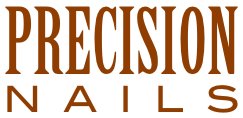“If names be not correct, language is not in accordance with the truth of things.” - Confucius
It’s not uncommon for beauty writers to use social media to request information for their upcoming articles. Writers, particularly those without their own experience as beauty professionals, rely on the knowledge of others, and those that contribute gain exposure from being quoted. I’m not able to respond to every request I receive (my expertise has its limits), but am more likely when I feel strongly about the topic. Assuming that the topic is relevant, the information valid, the article well-written and the quotes accurate, everyone can benefit, most important the readers.
A recent experience with another writer inspired this article; her request was for information about what nail professionals name themselves (nail technician, nail artist, manicurist, etc.) and how that might affect client perceptions. Rather than respond via email, I called the writer, Tracy Morin, and we had a stimulating discussion. I haven’t read Tracy’s finished article, so I don’t know how much, if any, of my information she used. However, for this article, I want to merge that seemingly benign “name” topic with the larger issue of false advertising and misrepresentation.
If that seems like a stretch, let me assure you, it’s not. But for the sake of argument, let’s begin with a more common example of false advertising found in nail salons: the misrepresentation of products and services. How often do consumers believe that they’re wearing gel enhancements when in fact they have traditional liquid and powder acrylics? This happens so frequently that I often find myself explaining my preferred products and how I use them.
I advise consumers that no matter what salon they patronize, they’re entitled to the truth about the products applied to their nails. Salons that falsely advertise any artificial nails as "better than acrylics” reveal how ignorant and gullible they expect consumers to be. For example, consider this description of “diamond nails” advertised by a salon: "They are strong and durable like acrylic, except with less odor. They are applied by brushing a resin glue on to the nails and then dipping the nail in to diamond powder." The powder is not “diamond;” it’s acrylic. Instead of acrylic liquid (ethyl methacrylate), this dip procedure uses an adhesive (cyanoacrylate) with acrylic powder (ethyl and methyl methacrylates).
Other falsely advertised nail services include:
- Gel - a layer of gel over liquid and powder acrylic. True gel nails consist entirely of acrylic oligomer gel (acrylates) cured with a UV light; there’s no powder.
- Solar - a misleading name for any French-style (pink and white) nails, exploits a brand trademark.
- Crystal - a fancy name for clear tips covered with acrylic monomer liquid and clear polymer powder.
- Porcelain - clay heated to 1200°F cannot possibly be used for nails, yet this ridiculous name persists.
- Shellac - a specific brand of soak-off gel polish, not a procedure. There are literally dozens of brands available.
- Medical Pedicures - a pedicure that’s promoted as if it were a medical procedure; manicurists aren’t licensed to practice medicine.
California’s Board of Barbering and Cosmetology recently released a statement advising consumers to verify licenses of individuals and salons advertising on the internet. What complicates the verification process is the fact that even licensed individuals and salons advertise with “fake” names. In California where establishment (salon) licenses are specific to a geographic location, a salon could have “Acme Nails” on a valid establishment license, but advertise as “Xanadu Nail Spa.” Try verifying the individual license of Jenna Hipp, the “Green Celebrity Nail Stylist.” If that’s not a fake name, perhaps she has no license?
I refuse to tolerate those who are unlicensed, fraudulent and/or pretentious. In my perfect world, all individuals and salons would be required to advertise with their legal names and license numbers. My California individual license (111051) lists my legal name and license type, “Manicurist” and that’s how I advertise. My scope of practice is no different from any other licensed manicurists in California, regardless of what they name themselves. For the record, my favorite example of false advertising has to be “licensed podiatric nail technician;” there’s no such thing in the state of California.
By Jaime Schrabeck, Ph.D.



